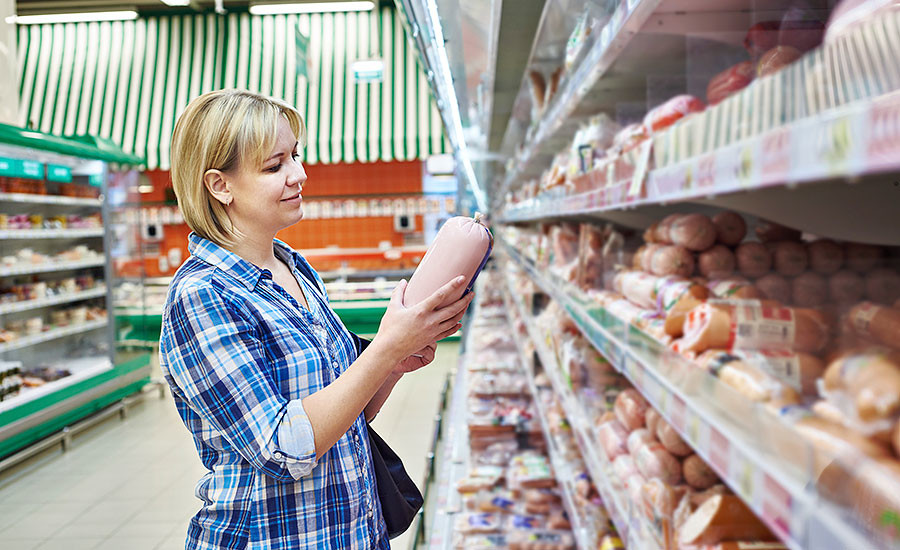Flexible packaging trends
The use of flexible packaging continues to evolve as new film structures and applications come online.
When you visit any retail or grocery store, there are plenty of examples of brands using flexible packaging for their product package instead of rigid containers such as a standard box, jar or can.
The flexible packaging sector offers solutions in a variety of different areas, from food and beverages to pharmaceuticals and other products that need extended shelf life. It is the most economical method to pack your products since the packaging is developed after the product it holds, rather than according to the one-size-fits-all theory. It can be changed in size, form and colour, and don’t forget the option to change details like handles and closing. The possibilities with flexible packaging are endless!
Down Gauging
Flexible packaging is developed after what it holds, which allows it to save more resources and energy compared to other types of packaging. For example, it uses less space when transported, since it can be created on the spot, and doesn’t hold a lot of air like rigid packaging. That means you can minimize transportation and also reduce costs.
One of the key trends that we use is downgauging for flexible plastic packaging. The combination of high prices for polymer and environmental impact make the customers demand an even thinner plastic film. Downgauging of plastic films will continue even though many of the traditional films have reached the limit for this trend. The flexible packaging industry will start to promote more of the ‘pre-cycling’ benefits of these types of packaging compared to the rigid ones since the combination of environmental impact and uncertain polymer prices continues.
High-Performance Films
Another important part for consumers is high-performance films, which also belong to the thinner films category. The most important aspect of this film is that it should be as durable as possible to keep the quality of the product it is holding, and also extend its shelf life.
These types of flexible packaging have increased in popularity especially within the food industry, particularly for the products that are being sold in Modified Atmosphere Packaging, also called MAP. These products mainly include bread and baked goods, such as cakes and pancakes. Two other growing trends are prolonged shelf life for the products and a shift in foodservice sandwich bread from frozen to MAP-packaged bread.
Consumer Convenience
Nowadays, we all live very hectic and busy lives, and everything needs to be more and more convenient. Let’s take food, for instance. If you don´t have a passion for cooking you will probably not cook dinner from scratch. That’s why ready meals in flexible packaging formats are becoming more and more popular. An increasing number of people are demanding their food to be pre-cooked or pre-sliced, which only increases the need for MAP packaging. These demands for more convenient solutions also include the dominant supermarkets where packed foods provide longer shelf life. Overall, it comes down to flexible packaging that makes life easier for consumers.
Bio-derived and Biodegradable Technologies
Environmental impact is a subject that keeps on growing in popularity every year. In the last couple of years, a few new products involving bio-based plastic have been released. For example, polylactic acid (PLA), polyhydroxyalkanoates (PHA) and poly-trimethylene terephthalate (PTMT).
The company Brazils Braschem Green PE is one of many that has taken on this new trend and started to use sugar cane raw materials in their products. The large US-based bakery Bimbo Bakeries USA is now using these new products and, despite the fact that the bag they use is only 36% bio-based, it´s still a huge change to celebrate.
Moving forward, we see flexible packaging expanding into non-food items, especially in liquids. Pouches will continue to replace bottles and boxes of items like laundry detergent, cleansers and such.
We already see more cleaning supplies in wipes form and packaged in flexible films instead of tubs. Pouches for liquids is one of the fastest-growing areas in both food and non-food areas. Just look at the baby food section at a grocery store! Instead of rows of glass jars, you see plastic containers. In the toddler section, a lot of food is in pouches with a spout and the kids can feed themselves! Always on the go, like we mentioned before! Will canned soup and vegetables be next? After all, the flexible film technology is there. Pouched refills can be bought for house cleaning supplies, body washes, shampoos are already in the stores, and we see it growing even more.

